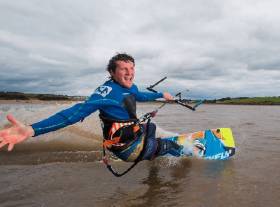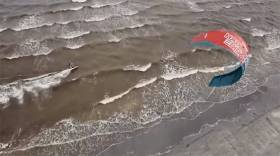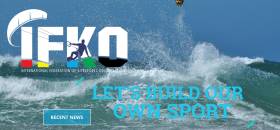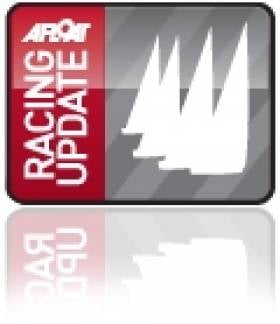Displaying items by tag: Kiteboarding
Parasailing, Kiteboarding & Topper Dinghies Join Fleet For RYA Youth Nationals Next Spring
Parasailing and kiteboarding have been added to the list of events at the 2019 RYA Youth Championships to take place in Weymouth next spring.
Entries are now open for the new-look regatta from 12-19 April 2019, which also welcomes the Topper and Laser 4.7 into the fold along with the Laser Radial, 420, 29er, Nacra 15 and BIC Techno 293.
The inclusion of the RS Venture Connect, Hansa 303 and 2.4mR parasailing classes, the RYA says, “reaffirms British Youth Sailing’s commitment to their long-term future in the UK by continuing to develop a pathway.”
In addition, twin-tip kiteboarding will feature after Formula Kite’s inclusion in the list of events for the 2024 Paris Olympics.
Entrants must be aged under 21 on 31 December 2019 with the exception of the 420, Topper, Twin Tip and para classes. Further details of requirements can be found in the Notice of Race.
More information can be found in the Notice of Race, while an overview of the regatta and details of discounted early bird entries can be found on the RYA website HERE.
WANTED! Female Athletes Sought for GBR Kiteboarding Talent Programme
The British Sailing Team has launched an exciting new talent search to identify and develop world-class female athletes with the potential to win gold pending final confirmation of Formula Kite’s inclusion at the Paris 2024 Olympics.
The team has joined forces with the British Kitesports Association and the English Institute of Sport to establish the #kite4gold programme.
Formula Kite is a cutting edge, high-performance hydrofoiling sport that sees riders race round a course at blistering speeds of up to 55 knots (63 mph).
World Sailing, the global governing body for sailing, confirmed at its mid-year meeting that there would be a mixed kite event put forward to the International Olympic Committee for inclusion at the Paris 2024 Olympics.
The decision is expected to be confirmed by the IOC after ratification at World Sailing’s annual conference later this year.
Formula Kite made its Sailing World Championships debut in Aarhus, Denmark, in August.
Britain fielded three world-class male riders – brothers Guy and Olly Bridge, and Connor Bainbridge. Guy Bridge clinched the silver medal after leading early in the week, while in the women’s division his mother Steph Bridge (above) finished 4th.
The goal of #kite4gold is to develop a strong group of female riders, one of whom will compete alongside a male rider for gold at Paris 2024.
In order to apply to be part of #kite4gold you must be a female British citizen aged between 15 and 28 who is fiercely competitive, highly motivated to succeed and enjoys fast and fun racing.
Crucially, the search is not limited to those who can already kitesurf. We want to hear from anyone who is a proficient racer in windsurfing, dinghy or multihull classes, as well as experienced riders from other board sports including surfing, snowboarding, skateboarding and wakeboarding.
Successful applicants will be trained by the British Sailing Team and BKSA’s expert instructors and coaches, and supported through the transition to becoming a full-time athlete.
If, as expected, Formula Kite becomes an Olympic sport, financial support will be available to shortlisted candidates via the UK Sport World Class Performance Programme funded by the National Lottery.
“While Paris 2024 seems a long time away, six years is a short time to develop world class athletes from scratch in a new event,” said Ian Walker, Director of Racing at the RYA.
“We want to get ahead of our competition so that we can give our athletes the very best chance of success. We cannot afford to delay our talent search until after the final IOC ratification as precious time would be lost.”
Andy Gratwick, Managing Director of the BKSA, added: “We are pleased to announce the launch of the #kite4gold talent ID programme, the first stage of an exciting project and journey towards the 2024 Olympic kitesurfing podium for British female competitors.
“We have a great history of British kitesurfing world champions from Mark Shinn and Aaron Hadlow to the Bridge family. We are excited to be entering this new era of Olympic kitesurfing and for the UK to lead the way in racing.”
To sign up to be part of our talent search click here. Applications are open now and will close at 12pm on Monday September 17.
Selection/development weekends will then be held at the following venues:
29-30 September – Exmouth
5 October – Weymouth
6-7 October – Poole
13-15 October – Weymouth
26-28 October – Weymouth
Get Hooked On Kiteboarding In Rosslare This Summer
#Kitesurfing - A new surf school in Rosslare opening in mid June aims to get the Irish hooked on kiteboarding, as the Wexford People reports.
Taking heed of the success of events like this past weekend's Battle for the Bay, and his first school in Duncannon established in 2009, Niall Roche's latest venture is Hooked on Rosslare.
The "full-offering watersports centre" will provide lessons not only in kitesurfing and stand up paddle boarding but also windsurfing, kayaking and sailing.
What's more, the centre also hosts a water park buoyed off Rosslare Strand for the summer months.
And it's not even the only initiative on Roche's plate this summer, as he and his wife Christina are organising the Irish National Kite Surfing Championships in Duncannon on 14 August.
The Wexford People has more on the story HERE.
#BattleForTheBay - All ages are welcome to Dollymount Beach on the north side of Dublin Bay today (Saturday 28 May) for the 10th edition of kitesurfing weekender the Battle of the Bay.
Doubling as the first leg of kiteboarding's KBC Tour, the weekend will also host contests for stand up paddle boarding - with the action even branching out to the River Liffey tomorrow morning (Sunday 29 May) for the Dublin Bay SUP Classic.
Plus as always throughout the weekend there will be food and entertainment on the beach, including kiting and SUP lessons for kids, as well as beach volleyball and land yachting demonstrations.
For more details visit the Battle for the Bay website HERE. And see below for some of the action from last year's event:
World Sailing Moves To Prohibit Two Kiteboarding Events
Kiteboarding wars continue with the world body for sailing blackballing two competitions run by the International Federation of Kitesports Organisations (IFKO). World Sailing has listed two International Federation of Kitesports Organisations (IFKO) events as Prohibited Events under the World Sailing Eligibility Code.
The 1st Junior Kitesports Freestyle World Cup (7-10 April) and the Kitefoil Silver Cup GP World Series (12-16 May) have been included on the Prohibited Events list following improper designation as a world event [Regulation 19.15(c)] and using an improper organizing authority [Regulation 19.15(d)].
World Sailing received no assurances that the 1st Junior Kitesports Freestyle World Cup and the Kitefoil Silver Cup GP World Sailing will be run under the appropriate rules or standards for kiteboarding and therefore have listed the events as prohibited.
World Sailing is recognised by the International Olympic Committee and SportAccord as the world governing body of sailing, which includes kiteboarding (on water). The IFKO's recent establishment and governance claims to kiteboarding does not alter World Sailing's responsibilities.
To date World Sailing have developed the racing rules for freestyle, wave and speed kiteboarding, secured the introduction of kiteboarding to the Youth Olympic Games, supported the creation of the World Kite Tour and promoted recognised world championships through the International Kiteboarding Association (IKA) and separate World Cup events in the freestyle, wave and slalom disciplines.
Part of World Sailing's responsibilities is to ensure ensure that events take place within the structure of the rules and are run to appropriate standards for the event and protection of competitors.
World Sailing says it is committed to developing relationships with the IFKO to ensure the long term growth of the discipline.
The war to control kiteboarding continues, as three organisations dispute the right to crown world champions across several disciplines: IKA (recognised by World Sailing), IFKO and the World Kite Tour.
Kitesurfing Will Be 'First Alternate' At Tokyo 2020
#Kitesurfing - There's been some good news for kitesurfing on the Olympic front as Surfer Today reports that the kiteboarding class will be the first alternate for the Tokyo Games in 2020.
It was announced at the 2013 ISAF Annual Conference in Oman that kiteboarding will be first in line if additional medals are allocated by the International Olympic Committee (IOC) for sailing in Tokyo in seven years' time.
In addition, the ISAF Council decided that class status will be awarded to the Formula Kiteboard and Twin Tip Kiteboard among a number of newly recognised sailing classes.
The news follows the recent message from the ISAF that kitesurfing would add an 'urban sport' feel to the Olympic programme should it be reinstated.
Kitesurfing was to be included in Rio 2016 at the expense of windsurfing only for the decision to be reversed in Dun Laoghaire a year ago.
New Videos Show Two Sides of Kitesurfing in Ireland
Two new videos demonstrate the different sides of kitesurfing in Ireland.
The latter below shows Irish kiteboarder Ryan Coote taking on the intense big surf charged by the winds of Hurricane Katia on the west coast recently.
Meanwhile the former is a more reflective illustration of the kitesurfing scene in Northern Ireland this year.
Both show that Ireland can compete with the best in the world when it comes to quality waves.
Racing Round up: Dun Laoghaire Regatta, ISAF Youths, Optimists, Paralympic, RORC, WIORA, Quarter Ton, Kiteboarding.
In offshore news, the Transatlantic Race 2011 Nears a Finish, and RORC yachts that headed West did best in the St Malo from Cowes race. Ireland's entry in the Tall Ships race, Celtic Mist, is safely in Scotland. WIORA starts this week in Clifden, thirty boats are expected.
Two top Cork performers are in Cowes for this week's Quarter Ton Cup.
In other boating news, rower Siobhan McCrohan won bronze at the World Rowing Champs in Lucerne, Kiteboarding debuted in Dun Laoghaire. There were Medals for Irish Kayakers at Athens Special Olympics.
And finally after a Elaine 'Shooter' Alexander is set for hero's welcome this week as she becomes the first woman from Northern Ireland to circumnavigate the island of Ireland.
All on our home page this morning, thanks for your interest in Irish Sailing and Boating.




































































